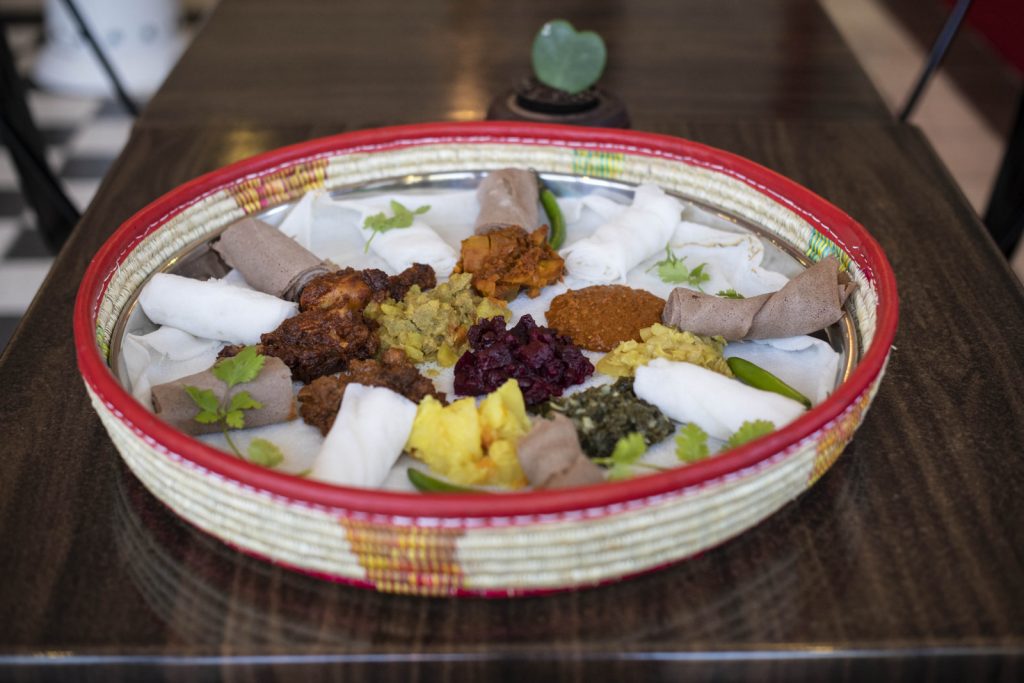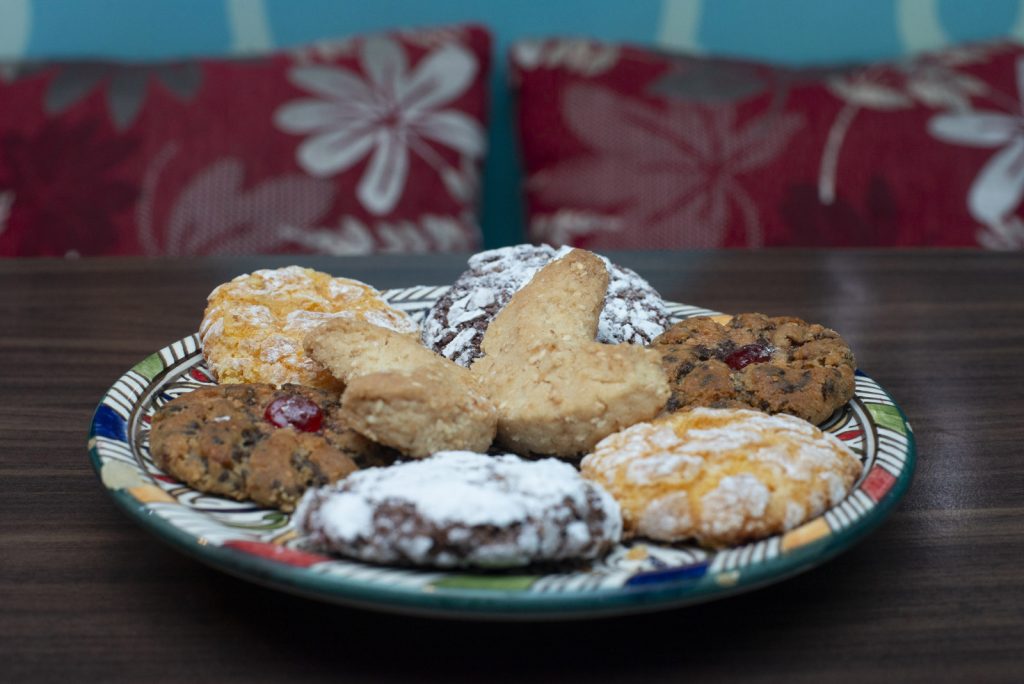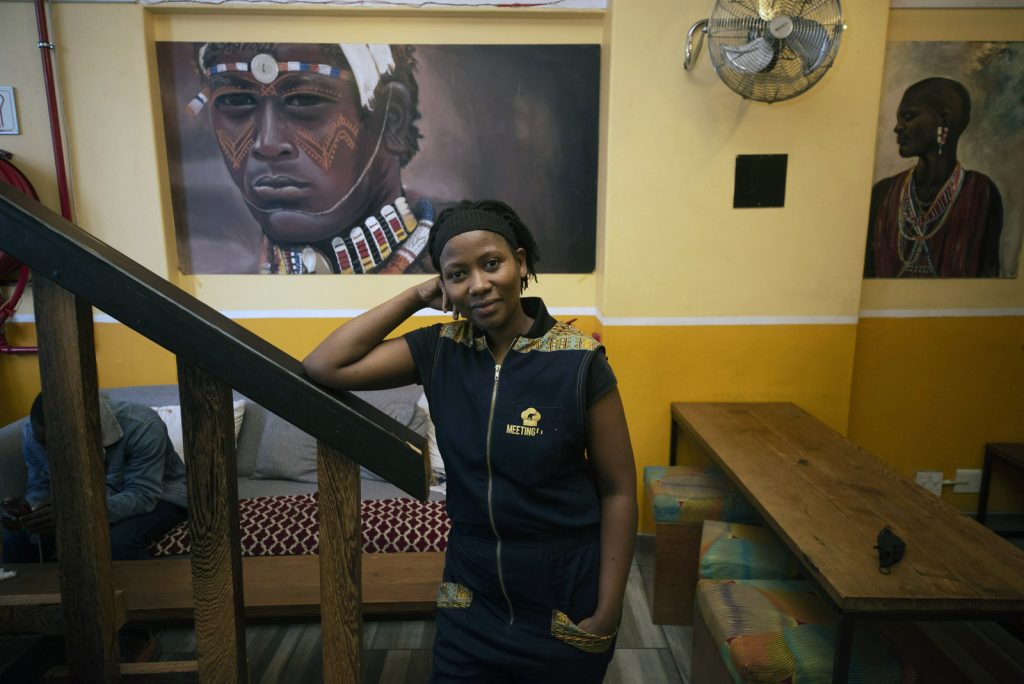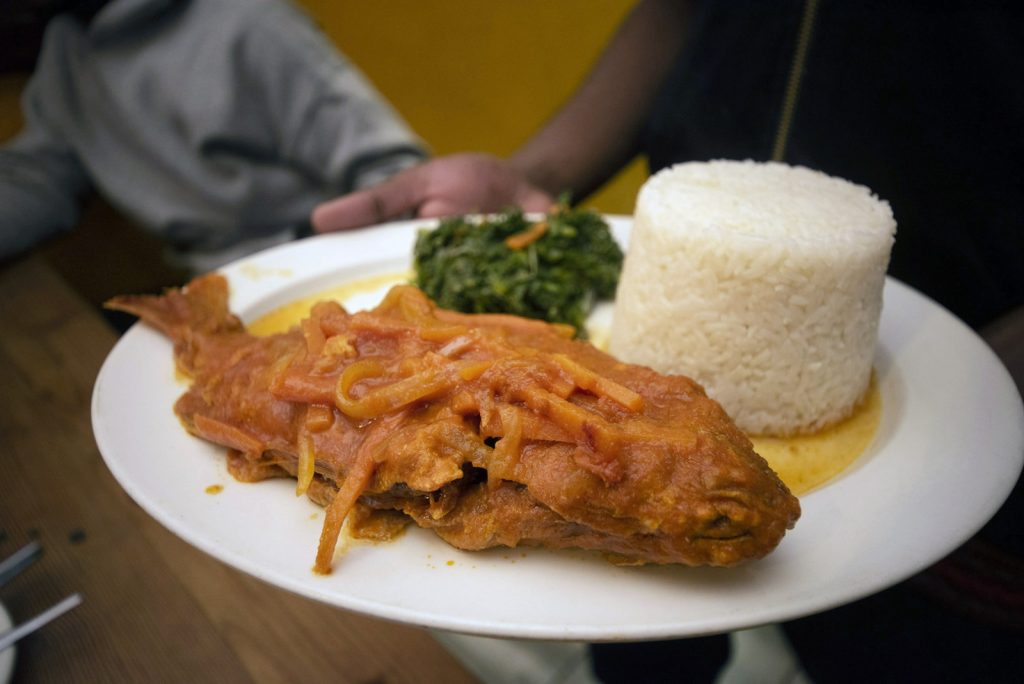Authentic: The Andalousse Moroccan Restaurant in Cape Town serves a variety of dishes, such as chickpea and couscous (left) and falafel (right), which is chickpea balls mixed with coriander, onion and spices. Photos: David Harrison
“Lijo tsa hao li lokile, o je ha monate!” is the Basotho equivalent of bon appétit, good appetite.
These are the words I heard as a child growing up in a Basotho household. One meal I’d get most excited about was papa le moroho (spinach) and often served with meat.
Food is a symbol of culture. Growing up in a small town in Mpumalanga, many kilometres away from Lesotho, the food my mother and sisters cooked is how I experienced that culture without going to the Mountain Kingdom.
Twitter user @Afrikanwolf started a food fight on the platform with three words, “Facts or not?”, accompanied by an image taken from TasteAtlas, which presents traditional food eaten in countries and regions around the world.
This atlas was not to the taste of many South Africans. It listed bobotie as the national dish. Bobotie probably originated in the colonies in which the Dutch East India Company traded. Its name may have originated from the Indonesian word bobotok or the Malayan word bomboe and was introduced to (and adapted by) enslaved Malays/Muslims in the Cape. It consists of curry-flavoured mincemeat, topped with an egg and milk layer, as described in EduAfrica.
Papa, made from maize meal, is a staple food for most cultures in Southern Africa, including the Basotho. But having it listed in TasteAtlas as Lesotho’s national dish without moroho was a surprise. Eating pap without any sides is like eating rice with nothing else.
Other countries’ national dishes included Ghana’s waakye (rice and beans), Ethiopia’s doro wat (a spicy chicken dish) and Mauritius’s dholl puri (a flatbread with spiced yellow split peas).
Africa is the world’s second-largest continent and home to about 1.3-billion people as of 2018. There are about 3 000 tribes and 2 000 languages and dialects, and each tribe might have a dish that represents them — but may not represent the whole country. So who gets to decide what each country’s national dish is?
An online petition, which now has more than 1 700 signatures, was created to have bobotie removed as South Africa’s national dish.
I have not travelled to many African countries but I wanted to try some of these “national dishes” and so experience parts of the continent in South Africa. What better way to celebrate Africa Month than by taking a taste tour and try some of the divisive national dishes?
To kick off my mini tour in Johannesburg, I took a short left to Ethiopia. It was my first time eating Ethiopian food, and I was pleasantly surprised. I ate a dish called mahberawi — a veggie-and-meat combo that includes chicken, beef, lamb, pumpkin, cabbage, spinach, potatoes and beetroot, all served on injera, a spongy flatbread made from teff flour, with Ethiopian spiced tea.
Next stop, Nigeria. I have often eaten one of the most famous dishes from West Africa, jollof rice, so I had to surprise my tastebuds. I chose Nigeria’s egusi soup made with pounded yam for the first time. To say it’s rich in flavour is an understatement. I went in with my hands as I’ve seen done in the movies, and the texture is what I first noticed, after the smell, of course. Egusi soup (made with plants such as squash, melons and gourd seeds, palm oil, leafy vegetables and meat or fish) has a distinct smell and the texture of the yam was almost like eating uncooked papa. It was an interesting and pleasant experience.
Here are some restaurants from three provinces — Gauteng, KwaZulu-Natal and the Western Cape — that serve food from Ethiopia, South Africa, Nigeria, Ghana, Morocco, Tanzania and Mozambique. You don’t need a passport, just a healthy appetite.
Little Addis Café, Ethiopia

This Ethiopian restaurant is popular for its friendly service, great ambience and, of course, delicious food and generous portions.
Its signature dish is mahberawi. The meal is available in full or half portions and can be enjoyed with white or brown injera.
Steve Askin said on Facebook that he has enjoyed Ethiopian food in Addis Ababa and in Ethiopian communities across the United States, but this spot in Johannesburg remains one of his favourites because of its “cozy atmosphere”.
Details: 44 Stanley Avenue, Braamfontain Werf, Johannesburg, 12:30pm to 9pm, Tuesdays to Sundays. Social media: Little Addis Cafe (FB), @littleaddiscafe (IG). The average price of a meal is R80.
Hombaze African Cuisine, Nigeria/Ghana
“Africa’s richest square mile” is home to this Nigerian and Ghanaian restaurant right in the heart of Sandton, Johannesburg. Hombaze is inside the busy Sandton City mall near the connecting entrance to the luxurious DaVinci Hotel and Suites.
It serves a variety of Nigerian and Ghanaian delicacies, including jollof rice with meat and fish options.
Nigeria and Ghana have an ongoing war about who makes the best jollof rice, which actually originated in Senegal. Rapper Bas sings about jollof rice in his hit song of the same name.
John Darshie wrote on Facebook: “I actually liked coming to Hombaze, the best place to have African cuisine, and also you are free to interact with the staff asking them about how the food is made and where it’s originally from.”
Details: 126, 11th Street Parkmore, Johannesburg, Mondays to Sundays, 10am to 10pm. Social media: Hombaze African Cuisine (FB). The average price of a meal is R200.
 Authentic: The Andalousse Moroccan Restaurant in Cape Town Photos: David Harrison
Authentic: The Andalousse Moroccan Restaurant in Cape Town Photos: David HarrisonMorocco is well-known for couscous and tagines, which is both the name of the meal and the conical shaped dish in which it is cooked. Tagines consist of vegetables, meat, chicken, fish or chickpeas cooked in a spiced broth.
Andalousse is one of the few Moroccan restaurants in South Africa. Besides tagines, it also serves dishes such as harira soup and pastilla pies as well as Moroccan salads and bread. It also has hookahs and a great vibe.
“Faizelpet” from Goodwood, Cape Town, left a five-star rating and review on 5 March on TripAdvisor after visiting the restaurant and described the food as authentic Moroccan cuisine. “Last night I went for dinner at Andalousse in Sea Point. I liked the fact that in true Moroccan style they had hookah available to patrons in a dedicated area. The food was absolutely delicious, flavourful and real value for money. The best way to end off the evening of dinner is with Moroccan mint tea, with their delicious biscuits.”
Details: 72 Regent Road, Sea Point, Cape Town, Mondays to Thursdays and Saturdays, midday to 10pm; Fridays 1pm to 10pm and Sundays midday to 9pm. Social media: Andalousse Moroccan Restaurant (FB). The average price of a meal is R200.
 Delicacy: Meeting Point restaurant in Cape Town, owned by Rita Moy (above)
Delicacy: Meeting Point restaurant in Cape Town, owned by Rita Moy (above)Meeting Point was established in 2013. The restaurant is described as a place that connects people through Tanzania and East African cuisine in South Africa’s Mother City.
It has vegetarian and vegan options. Also on offer is Tanzania’s national dish, ugali. It is stiff porridge similar to pap and is made with maize meal, cassava flour, sorghum, or millet and is served with fish, meat, cooked vegetables or bean sauce. It is known by a variety of names including sima and fufu and is eaten in many African countries.
“Shannon R” gave the restaurant five stars in a social media post in 2018 and said it was “one of the best meals in Africa. I was recommended this restaurant by our walking tour guide and she was on the money. This restaurant was exactly what I was looking for — authentic, great vibes, friendly staff, with fresh and delicious African cuisine.”
 Delicacy: Meeting Point restaurant in Cape Town, serves cuisine from East Africa, such as this curried fish dish (left). Photos: David Harriso
Delicacy: Meeting Point restaurant in Cape Town, serves cuisine from East Africa, such as this curried fish dish (left). Photos: David HarrisoDetails: 67 Strand Street, Cape Town, Mondays to Sundays, 9am to 10.30pm. Social media: Meeting Point (FB). The average price of a meal is R90.
Little Mozambique, Mozambique
This restaurant is a great place to try the national dish, xima, similar to the ugali served at Meeting Point. The restaurant is in the centre of Howick in KwaZulu-Natal. Little Mozambique serves a blend of Mozambican, Portuguese and Indian flavours, according to its website.
Brett Ballito visited the restaurant in October last year and said in a review on TripAdvisor: “We always have a great meal here. For today’s lunch we had a Maputo starter, which was excellent, the hake and chicken dishes were tasty and done perfectly. Just right for a cold drizzling misty Howick afternoon.”
Details: 50 Main Road, Shop Number 6, White House Centre, Howick, Tuesdays to Saturdays midday to 9pm, Sundays midday to 4pm. Social media: Little Mozambique (FB); The average price of a meal is R150.
Lingela at Southern Sun, South Africa
Lingela is an buffet restaurant where people can request their meals of choice cooked to suit their palates.
Anisha Singh left a five-star review on EatOut, saying: “One word of warning before you set foot at Lingela … arrive hungry and be prepared to be blown away with the best buffet spread in KZN. Prawns on skewers, fresh fish, braaied meats, decadent curries and lots and lots more. The thing is that the food is delicious and will keep you going back for more. Prepare to be mesmerised as Lingela lives up to the hype.”
This would be a great place to eat bobotie and find out if it’s worthy of the South African national dish title.
Details: Southern Sun Elangeni & Maharani, 63 Snell Parade, North Beach, Durban. Reservation only. Mondays to Sundays 6pm to 11pm; lunch on Sundays from midday to 3pm. Social media: Lingela at Southern Sun. A meal costs R395 for adults and R160 for children.